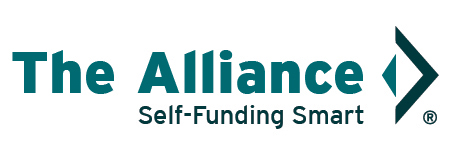Medical Debt is a $195 Billion Problem: Here’s How Employers Can Help
By: Melina Kambitsi, SVP, Business Development and Strategic Marketing
 Medical debt in the US is a serious and worsening issue, with combined debt reaching over $195 billion in 2022. In the last five years, over half of American adults – more than 100 million people – reported having medical debt. And studies have shown that medical debt can also devastate people with health insurance. Fear of going into medical debt is increasingly causing people to delay or skip necessary care. This can lead to decreased overall health, worsening health conditions, and higher medical bills when patients do seek treatment.
Medical debt in the US is a serious and worsening issue, with combined debt reaching over $195 billion in 2022. In the last five years, over half of American adults – more than 100 million people – reported having medical debt. And studies have shown that medical debt can also devastate people with health insurance. Fear of going into medical debt is increasingly causing people to delay or skip necessary care. This can lead to decreased overall health, worsening health conditions, and higher medical bills when patients do seek treatment.
Medical debt is a growing concern for employers because when employees are worried about being able to meet their health needs or the needs of their loved ones, they cannot work productively. Because heightened stress and skipping care to avoid debt can lead to more health complications in the future, employers can expect employees who do not utilize healthcare to require more time off to deal with health issues in the future.
TIERED NETWORK
A tiered benefit plan is one way employers can design their benefit plan to help employees make smarter healthcare decisions. With tiering, preferred value healthcare providers are made to be more affordable for plan participants. The Alliance offers customized tiered benefit plans that include alternative care solutions like direct primary care and virtual and telehealth services.
SMARTER HEALTHSM ANALYSIS
The Alliance helps self-funded employers reduce their healthcare spend by providing – and helping them understand – their data. We use deep data mining and analysis to create a customized report, our Smarter Health analysis. Employers can see the aggregate data of where their employees are seeking care so they can better focus incentives and employee education efforts to guide their employees toward high-quality, low-cost care. This means the employer and their employees pay less for better healthcare.
INCENTIVES
Employers can encourage employees to utilize preventative care services and engage in healthy habits to reduce future healthcare costs. Incentives could include providing paid time off to attend appointments, cash rewards for using specific preferred value providers for procedures or contributing to employee HSAs or HRAs for completing biometric screenings. Employers can also provide incentives for participating in wellness programs that will reduce healthcare costs for their employees and business long-term.
PREFERRED VALUE PROVIDERS
One of the best ways employers can help their employees save money on healthcare is by making sure they understand their benefit plan and how to make prudent decisions when they need care. Employers should ensure their employees are aware that cost and quality are not the same for all providers. Our Smarter Care Advisor allows employees to compare prices and find the care they need at the best possible price.
SUPPORT RESOURCES
Human Resources teams can also let employees know they are a resource for them and a source of support. Having support can make a big difference for employees who may feel overwhelmed in their care process and don’t know where to start. Finally, employers should make sure employees know about any employee assistance programs (EAPs) and care navigation services included in the benefit plan.
The Alliance can help you design your benefit plan to encourage employees to make smart decisions about their healthcare. We also provide resources employers can use to educate their employees to be smarter healthcare consumers and get the most out of their benefit plan saving themselves and their self-funded employers money.
Reach out to our Business Development team to learn how The Alliance can help you reduce healthcare costs for your employees and your business.
Melina Kambitsi Ph.D. joined The Alliance in 2017 and leads the teams responsible for business development, client development, and strategic marketing.
